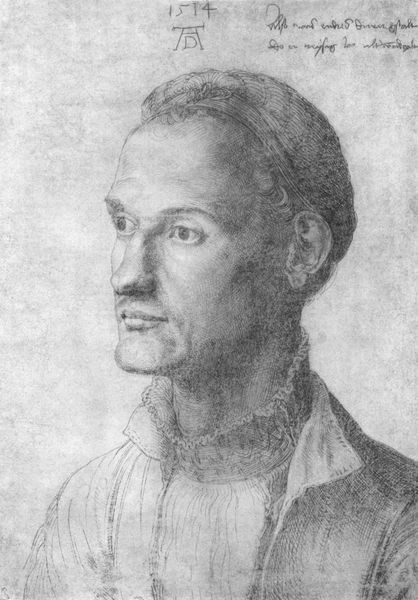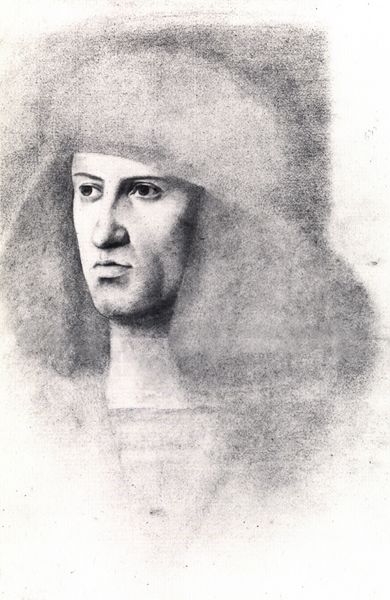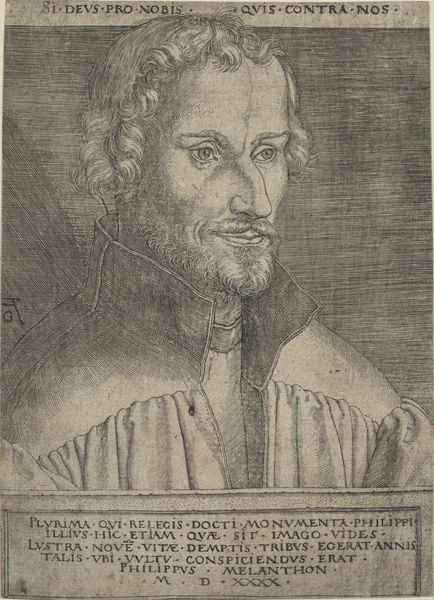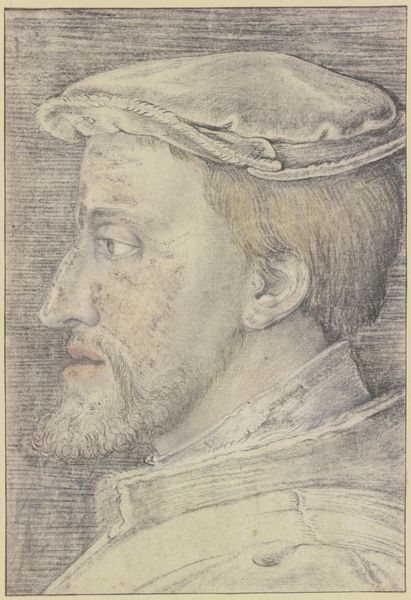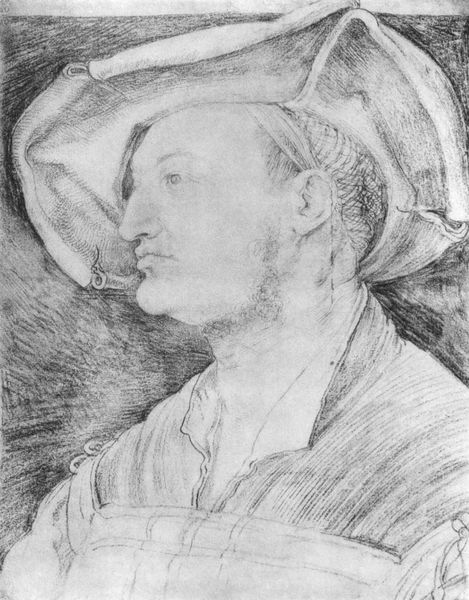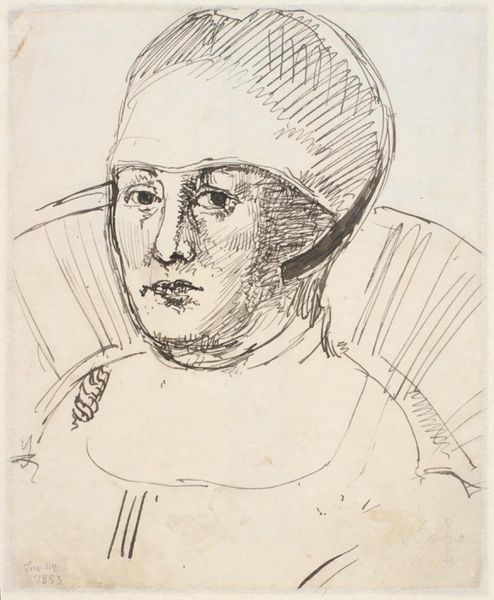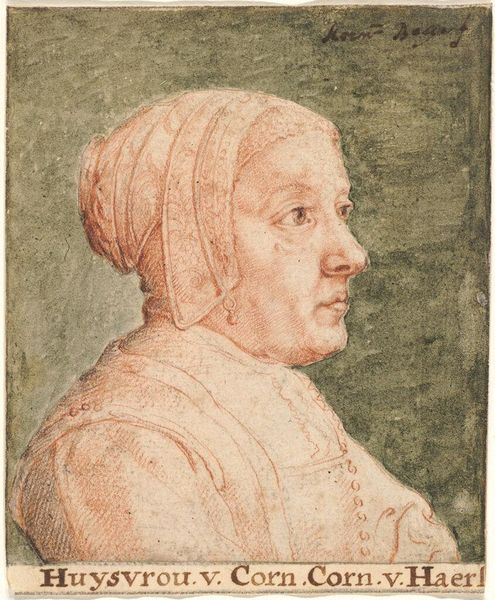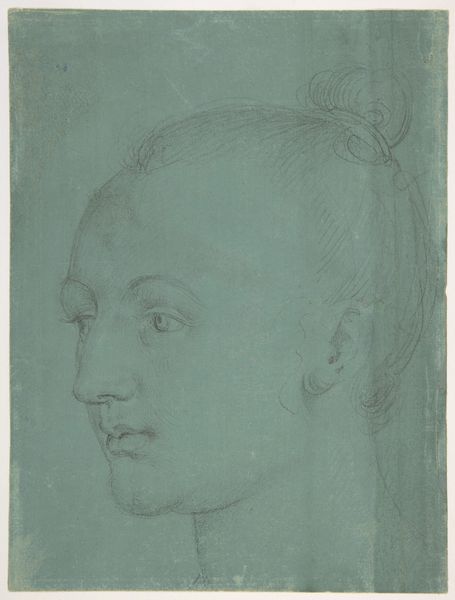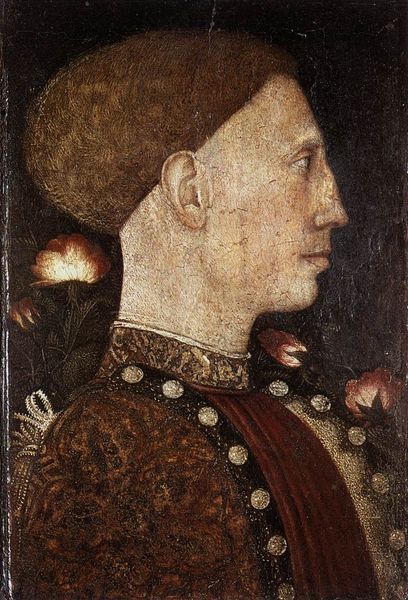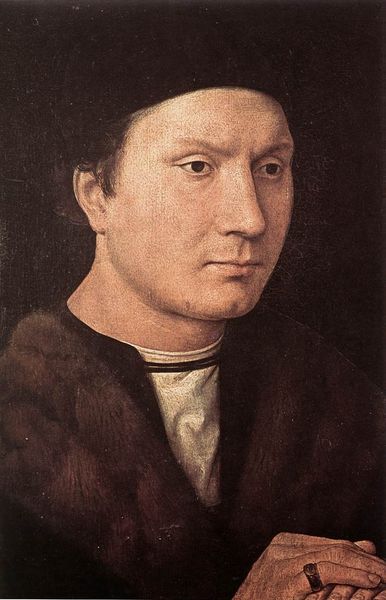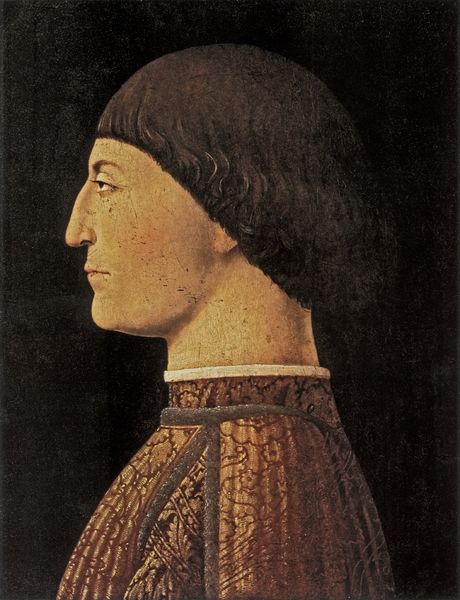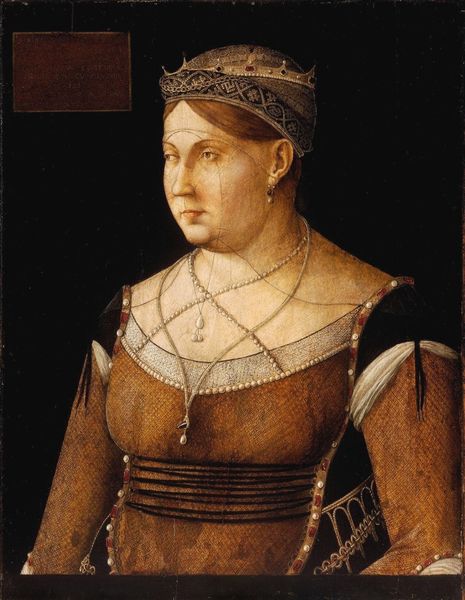
drawing, pencil
#
portrait
#
drawing
#
self-portrait
#
head
#
face
#
charcoal drawing
#
figuration
#
charcoal art
#
portrait reference
#
male-portraits
#
portrait head and shoulder
#
pencil
#
human
#
animal drawing portrait
#
portrait drawing
#
facial portrait
#
northern-renaissance
#
early-renaissance
#
forehead
#
portrait art
#
fine art portrait
#
realism
#
digital portrait
Copyright: Public domain
Curator: Here we have Albrecht Dürer's rendering of "Hans the Elder Portrait Burgkmair," a pencil and charcoal drawing executed in 1518. Editor: The immediate impression is one of reserved observation. The figure is carefully neutral, almost clinical in its assessment. Curator: Precisely. Dürer’s focus is meticulous. Note the almost photographic realism he achieves through layering fine strokes to build texture. The fall of light across the forehead, the slight imperfections rendered around the eyes—all these contribute to its lifelike quality. The controlled lines, the balanced composition with that dark, isolating backdrop... It all serves to showcase Dürer’s technical virtuosity. Editor: I find it less celebratory. Given Dürer’s social context, it's difficult not to interpret a level of precarity in the elder Burgkmair’s guarded gaze. The slight downward turn of the mouth reads to me as anxiety. The carefully controlled image might, on closer examination, expose more subtle vulnerabilities of a man navigating power during the Renaissance. This would fall into a line of the ways masculinity has had to perform strength at the expense of vulnerability. Curator: An interesting counterpoint, though I hesitate to attribute such overtly psychological weight to Dürer’s artistic choices. The Northern Renaissance had its representational strategies and limits, after all. Surely the very exacting medium, which serves in no uncertain terms to portray class status, demands we engage primarily with formal technique here, not potential social critique. Editor: But are those things mutually exclusive? Even representational limits are themselves indicative of power structures at play. Considering the Burgkmair family’s significance in Augsburg, the elder Burgkmair has entered posterity and public display. A lot rests on his shoulders; his visage has become a social symbol of their influence. His controlled expression is precisely an essential mode of the performance and transmission of cultural inheritance, legacy, wealth and power. Curator: A potent intersection, and a reminder that every brushstroke – or pencil stroke in this case – echoes within a broader sociopolitical landscape. Editor: Absolutely. It transforms a Renaissance man into an ever-present subject of power, representation and visual economy. Curator: Well, I suppose in examining the play between visual representation and social dynamics, there's a fruitful dialogue to be had on the meaning of representation as a social act in Renaissance art.
Comments
No comments
Be the first to comment and join the conversation on the ultimate creative platform.
